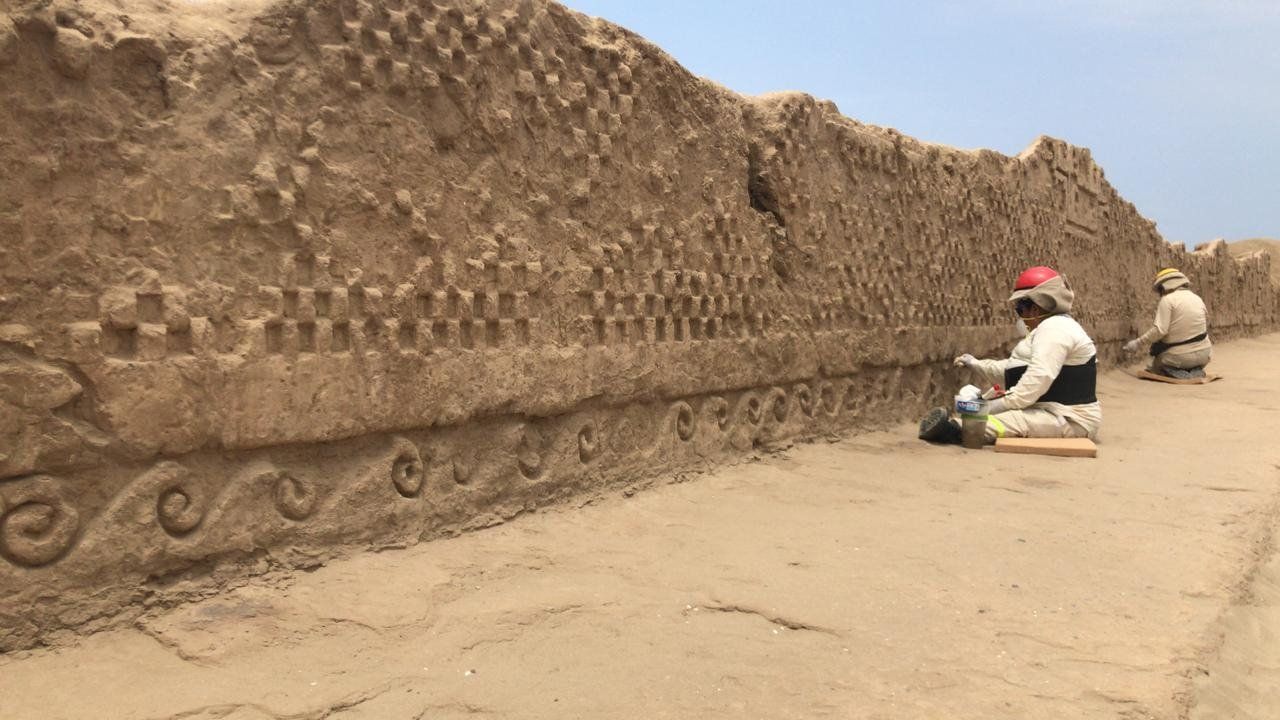Peru's Minister of Culture, Patricia Balbuena, announced on Monday, October 22nd, that a new collection of treasures were found, including 19 wooden sculptures and a complex wall.
From the 600-year-old temple of Machu Picchu to the alleged alien landing strips carved into the rocky landscape, Peru's archaeological findings have ranked amidst major head-scratchers among scholars.
Now another find adds to the mystery of Peruvian forebearers, with the discovery of some 20 sculptures with most of them showing no signs of damage after being buried for nearly 800 years. That especially speaks to the durability of the unearthed works, considering they were made entirely of wood.
Peru's Ministry of Culture announced the finding on Monday, adding that the relics were discovered at a dig by the Chan Chan citadel in the northern part of the country. What was found consisted of 19 sculptures of what appear to be soldiers as well as a rather sophisticated adobe wall, also reportedly undamaged.
PREVIOUSLY: 20 INCREDIBLE SIGHTS IN PERU EVERYONE NEEDS TO SEE (THAT AREN'T MACHU PICHU)
The sculpted figures were discovered in alcoves spaced evenly in the wall. Standing at roughly 27 inches tall, each figure has a clay mask covering their faces and bear scepters and shields. The objects, including one found decapitated, were located near the entrance of what is believed to be a ceremonial plaza.
The discovery marks the oldest items ever unearthed from the Chan Chan site that also houses the largest known citadel in the country before the arrival of Columbus. Currently declared an endangered site by UNESCO, excavations in the area continue with extreme caution.
While archaeologists won't elaborate on the significance of the sculptures, they're particularly interested in details of the uncovered wall. Images include a variety of motifs, including one that resembles a feline or a lunar creature.
They're also exploring additional details of the city's structure. Roughly 7.7 square miles of the city has already been excavated and so far it's believed the layout was to reinforce a diligently followed political and social order. It also includes nine palaces walled with multiple layers of adobe.
What is known so far is that the findings are further evidence of the legacy of the Chimú civilization, which was estimated to have started around 850 C.E. and slowly grew in power and expansion near the end of the 15th century. The civilization reportedly declined after a number of conflicts with the emerging Inca Empire, which eventually vanquished the Chimú society.
READ NEXT: EGYPTIAN ARCHEOLOGISTS DISCOVER IMPRESSIVE 2,000-YEAR-OLD SPHINX ALONG THE NILE RIVER


